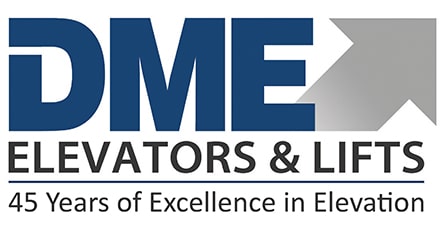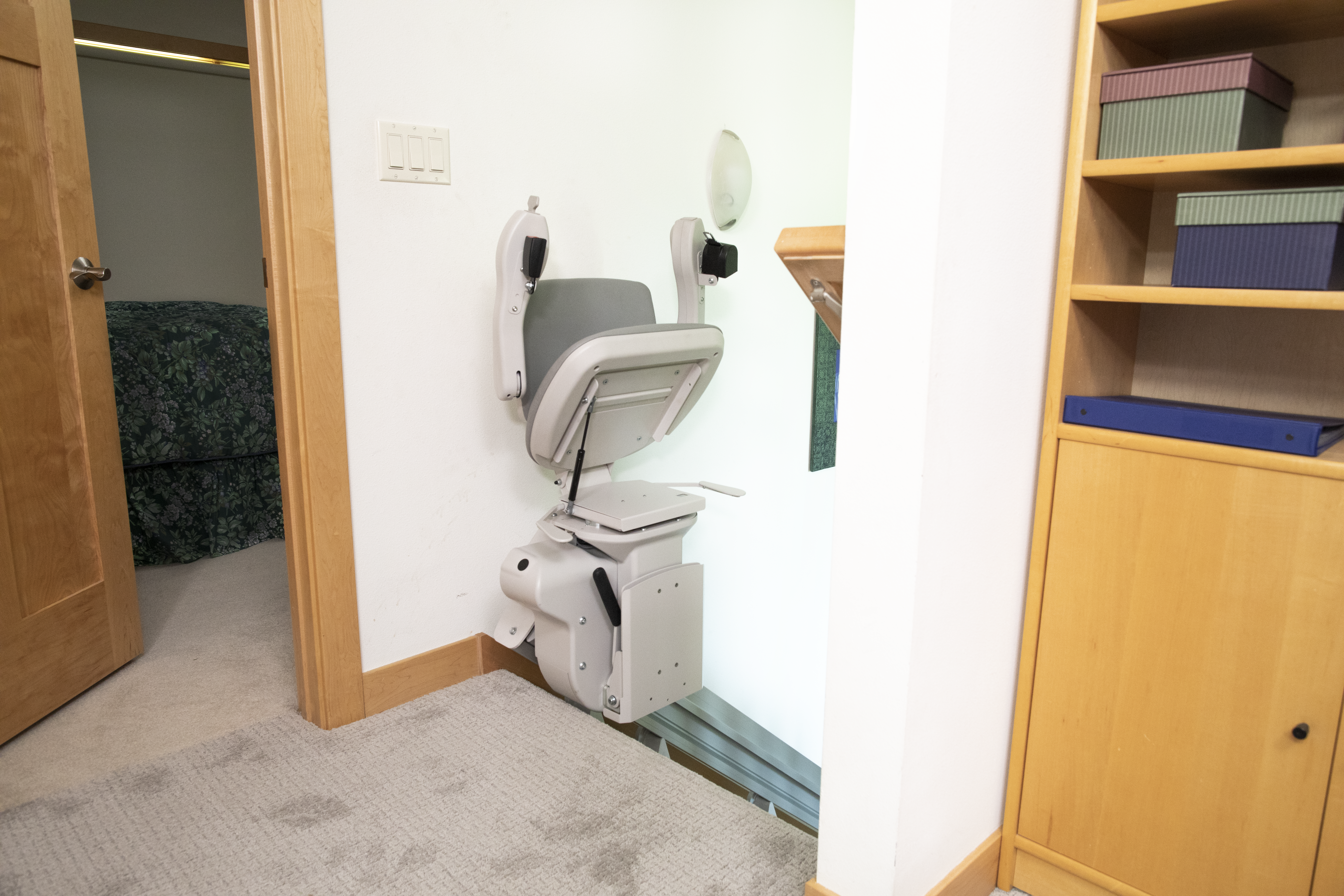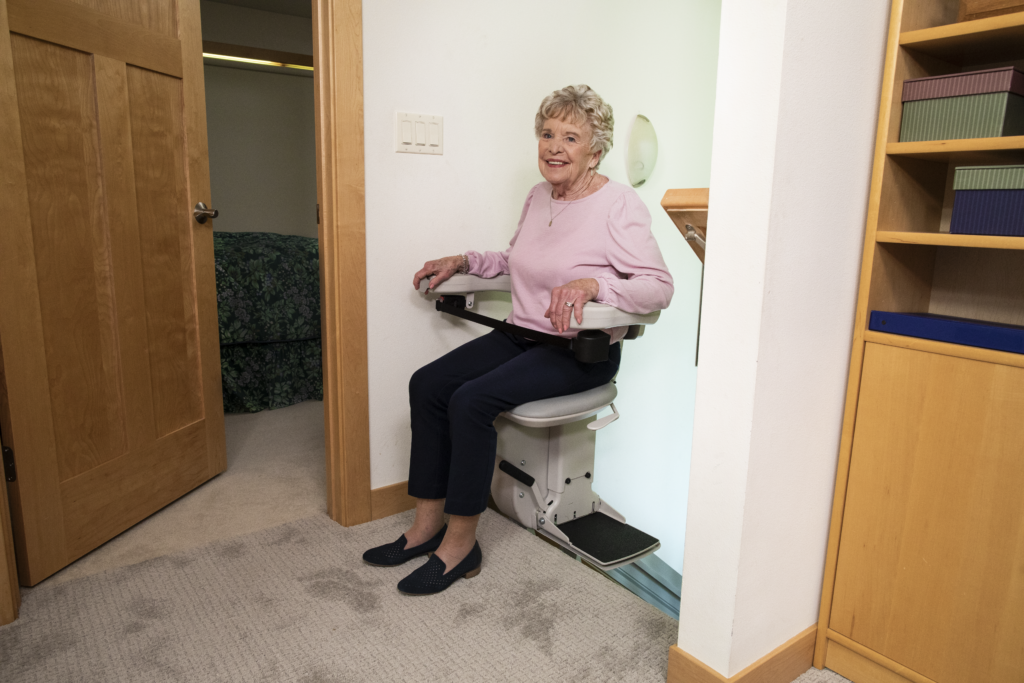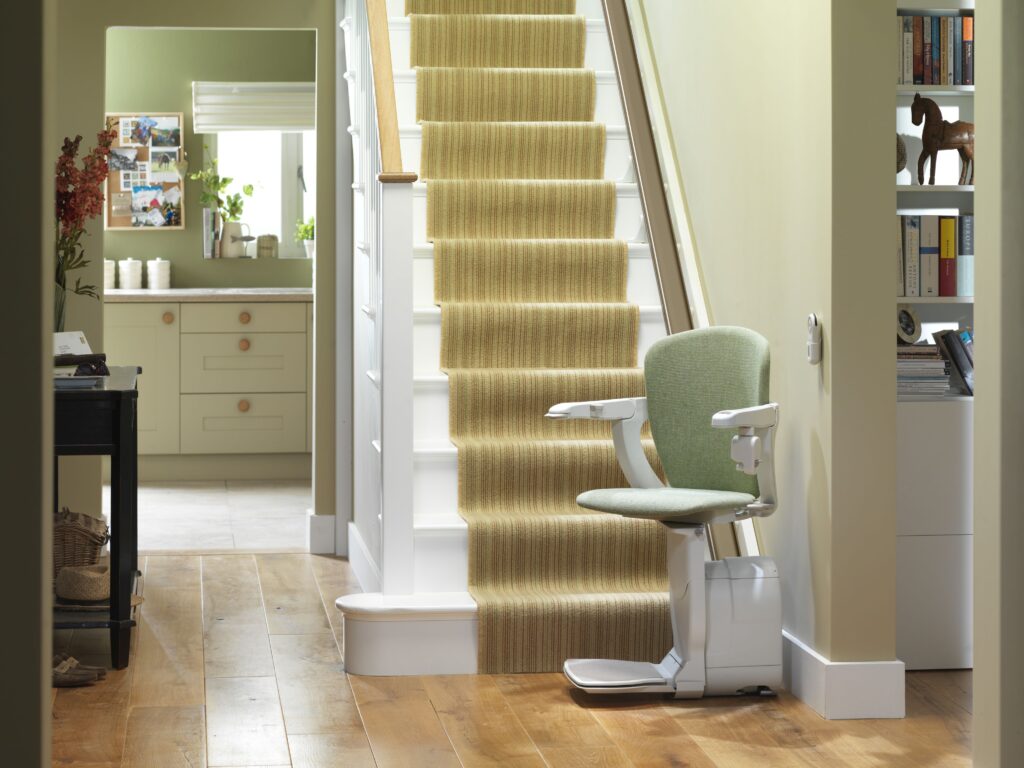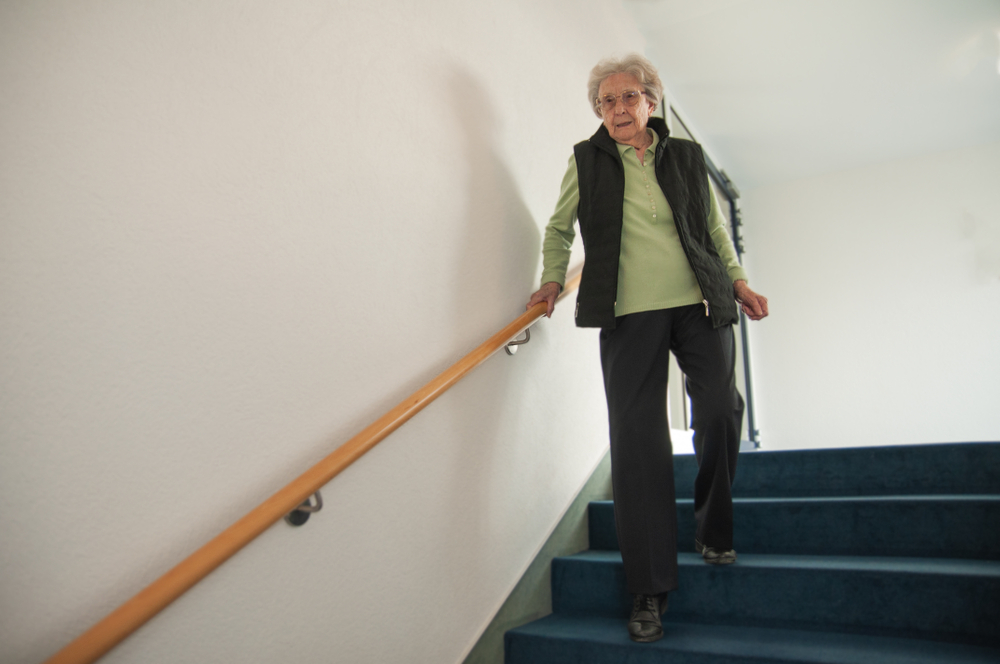Shopping for a stairlift for your home can start to feel overwhelming with the number of options available. With straight lifts, curved lifts, and different customization features, how do you pick the right one for your home? It’s important to know the basic space requirements to properly install a stair lift in your home—that way you know you’re picking the right model.
If you want to learn more about stair lift installation requirements, you’ve come to the right place. We’ll go over the basic stair lift requirements, including lift dimensions, installation requirements, and special considerations to keep in mind.
Basic Stair Lift Space Requirements
Knowing the basic stair lift requirements will help you make the right choice for a home lift. You want to make sure you have the proper space for the lift to safely navigate the stairs and keep the passenger safe. These requirements provide both functionality and safety for stair lift use. Space requirements for a stair lift include staircase width, head clearance, and rail length.
Minimum Staircase Widths
Stair lifts can easily fit a standard 36-inch-wide staircase. In some instances, you may need to remove the handrails to allow for a clear path. Some stair lift models can accommodate as narrow as a 28-inch-wide staircase. This can vary depending on the model of stair lift you choose, so be sure to check the requirements of the lift to ensure it will fit your stairs.
Head Clearance
While shopping for a stair lift, you want the passenger to have enough clearance that they don’t bump their head or have to duck as they ride the lift. Most modern homes have tall enough staircases where head clearance won’t be an issue. However, older homes and basement stairs may not give you enough space. This is an important consideration and something to mention when initially speaking to an advisor over the phone.
If you have a narrow or short staircase, talk to the stair lift company you’re working with. They’ll come to your home to measure your staircase and give you mobility options that will work best for your space.
Rail Length and Projections
Stairlift installation requirements also include adequate space for the lift’s rail system. Your stairlift travels up and down your staircase on a rail that’s installed on one side of the stairs. Most stair lift models have a limit on how far the rail can extend.
Stairlift rails also stick out a bit at the top and bottom of your stairs. This allows the lift to safely drop off your passenger on the top landing step or the bottom of your staircase with enough space to safely disembark.
While the exact length of this extension varies depending on the model of the lift, a good rule of thumb is to consider the rail will extend 18 inches at the top and bottom of your stairs. This should be enough space for the lift and passengers to move around safely.
Certain stair lift models have folding rails that allow you to tuck the ending rail away when the lift is not in use. This frees up some space and prevents the rail from becoming a tripping hazard. This retractable rail can come in both automatic folding and manual folding options.
Electrical Requirements for Stair Lift Installation
Stair lifts run off electricity and need a continuous source of energy to keep the batteries charged at all times. To keep the battery charged, the stair lift needs to always be plugged into an outlet near the stairs. The length of the power cord depends on the model of the stair lift, but it’s recommended to have an outlet within 5 feet of where the lift will be installed. This ensures the stair lift’s power cord will be able to reach the outlet without being too taut and creating a tripping hazard.
If you don’t have an outlet within 5 feet of the stairs, you can still install a stair lift. The best option is to install a new outlet near the stairs. That process is straightforward for any professional electrician. Rest assured you will be up and running in no time.
Special Considerations for Unique Staircases
It’s important to make sure there aren’t any obstructions at the top or bottom of your staircase that could interfere with the stair lift. While you can easily move large pieces of furniture such as couches and coffee tables. However, you need to take into account that your stair lift could block doors or hallways at the top or bottom of your stairs.
The ending rail of the stair lift can stick out and create tripping hazards or block doors from closing. Thankfully, there are a few options to get around this problem. As we mentioned many stairlifts have retractable rails that allow you to tuck away this ending rail when the chair isn’t in use. Some stair lifts also have curved rails that wrap around the banister and keep the lift away from the door.
Find the Perfect Stair Lift for Your Home with DME Elevators & Lifts
Installing a stair lift is a significant investment, and you want to feel confident you chose the right one for your circumstances. Stair lifts require a certain amount of space in your home to keep passengers safe, as well as electrical requirements to keep the batteries charged. Take special care when shopping for a stair lift to make sure you pick one that’ll fit on your staircase and keep your loved ones safe.
To make sure you get a stair lift that fits in your home and offers safe mobility assistance, get in touch with DME Elevators & Lifts. We’ll work with you to create custom stair lift solutions for your home. Visit one of our showrooms to get a feel for the model of stair lift you want. We’re proud to serve our local communities in Illinois, Indiana, and Wisconsin.
